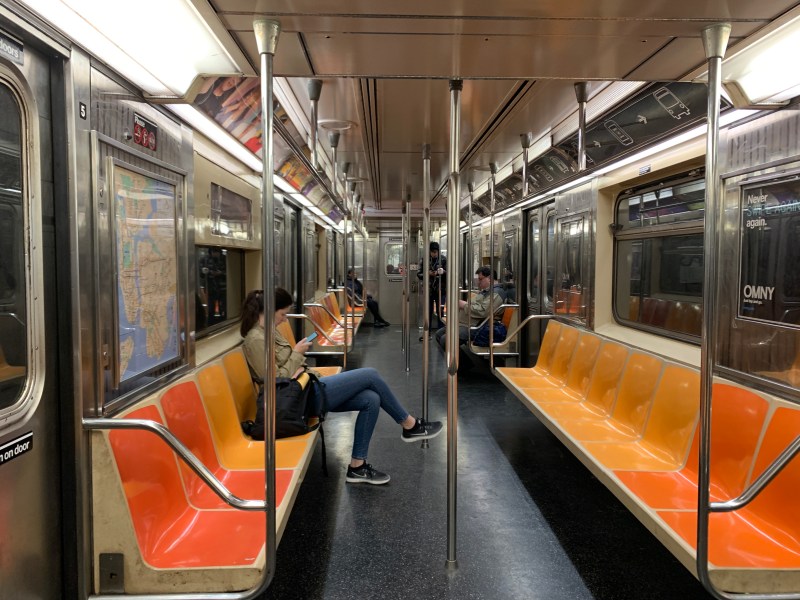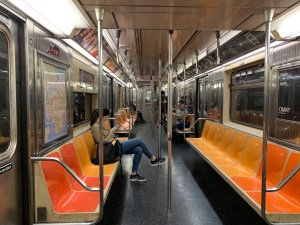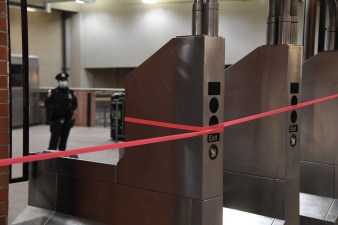Experts: Senate Bill’s $25B for Transit Won’t Be Enough
Yet Congress must do much more to stave off long-term damage, officials and advocates say.

Transit could be damaged for years to come if Congress does not appropriate more than the scant $25 billion it put in the $2-trillion COVID-19 emergency aid package, and it is likely that more bailouts will be needed, advocates and officials said Wednesday as Congress was poised to vote on the Senate stimulus bill.
Just days ago, leaders of the country’s 10 biggest transit agencies begged the feds for at least $25 billion for themselves alone, but now those agencies must split the money with hundreds of smaller agencies around the country.
“Transportation systems represented in this letter serve regions that combined make up 32 percent of the national gross domestic product,” the leaders of the 10 agencies pleaded. “The economy in our major urban regions nationwide won’t be able to rebound from this crisis without us.”
The spread of the virus has hit transit immediately and hard: The toll on transit services because of reduced state and local revenue, the decline in farebox receipts because of lost ridership, and higher costs associated with greater fleet cleaning and protective gear for workers could lead to a shortfall of $26 to $38 billion for agencies around the country, according to TransitCenter, a research and advocacy group. That could damage this essential infrastructure for years to come.
“This is a five-alarm fire for transit agencies — it’s extremely intense and it’s going to last a long time,” said TransitCenter spokesman Ben Fried. “The federal bill will stop the flames from spreading, but more will have to be done to prevent serious, long-term damage.”
And even the small amount for transit will need to bedivvied up among many plates. According to formulas in the House version of the bill, which is likely to be replicated in the Senate version, about $2 billion would go to rural transit agencies — leaving only $23 billion for the major metropolitan areas. The package also stints the country’s largest transit system, New York’s Metropolitan Transportation Authority.
The bill allocates $4.35 billion for transit in New York State, $3.8 billion of which will accrue to the MTA. It’s not enough, according to MTA Chairman Patrick Foye. The agency estimated on Wednesday that his services were losing $125 million a week and could lose more than $6.5 billion by year’s end if the current depressed ridership numbers continue unabated.
“MTA needs significantly more than $4 billion to survive this crisis,” Foye said.
Advocates said that while the aid will immediately prop up the nation’s transportation backbone, it likely will not suffice for the long term.
“It’s a very positive sign that Congress stepped up and recognized that transit is an essential service for maintaining the health-care system and getting workers to their jobs,” said Beth Osborne, the director of the advocacy group Transportation for America, adding, however, that uncertainty about the duration of the pandemic and possible recurrences of outbreaks means that “Congress is very likely to have to come back and do a lot more.”
Riders Alliance Executive Director Betsy Plum said that’s clear just by looking at New York’s struggling MTA.
“In the coming months, the MTA will need more help than the $3.8 billion set aside in this bill,” she said. “In whatever relief comes next, New Yorkers, who make up 38 percent of transit riders nationwide, deserve better than 15 percent of federal transit rescue dollars.”
On the positive side, because most federal funding for transit comes in the form of money for major capital improvements, not operations, the stimulus package represents “almost three times what the federal government spends annually on grants for transit systems [and] provides a huge infusion of dollars into transit operations, which have been mostly off-limits for federal transit funding for years,” transit expert Yonah Freemark tweeted.
Transit section of the stimulus bill, providing $25 billion to systems: pic.twitter.com/hBKUT9uvjf
— Yonah Freemark (@yfreemark) March 25, 2020
The nation would grind to a halt and be unable to function without its transit agencies. TransitCenter estimates that 2.8 million essential workers — such as hospital, health-care, emergency, sanitation, and postal workers, and those who staff grocery and convenience stores — ride transit to their jobs; such workers comprise 36 percent of the 7.6 million Americans who use transit to get to work, according to numbers from the U.S. Census Bureau’s 2018 American Community Survey.
In New York City — now the epicenter of the pandemic — 850,000 essential workers ride transit, including 100,000 hospital workers and some 150,000 other health-care professionals, the center says.
The steep ridership drops have prompted transit agencies around the country — from San Francisco’s Bay Area Rapid Transit to the Washington, D.C., area Metro — to cut back service. Even the MTA, a notable hold-out, announced service cutbacks on subway, bus, and commuter rail service this week, after weeks of declining ridership.
Amtrak, the country’s intercity rail service which after years of financial trouble had been approaching profitability, has seen its ridership drop 92 percent, the Wall Street Journal reported. Amtrak was likely to get a little more than $1 billion in the emergency-aid package.
Beyond the shortcoming for transit, the Senate stimulus package is a disaster for New York State, said Gov. Andrew Cuomo, who has emerged as a leader on the national stage during the crisis. He said New York had been promised $17 billion in an earlier House bill — which would have covered the state’s estimated $15-billion budget hole — but the Senate bill would only send $3.8 billion to New York State.
“It would really be terrible for the state of New York,” Gov. Cuomo said during a morning news conference in Albany. “That is a drop in the bucket as to need.”
Later, Cuomo spokeswoman Dani Lever offered specifics, with a lower estimate:
“Based on initial reports, New York State government gets approximately $3.1 billion. As a percent of our total state budget — 1.9 percent — it is the second lowest amount in the nation. Literally 48 states get a higher percentage in funding than New York State. For example, South Dakota gets 17.9 percent.
“This is despite the fact that New York State is incurring the greatest costs as we have the highest number of cases in the country. New York State has 30 times the number of cases as Texas’s 1,031,” she added. “The gross political manipulation is obvious. For example, Wyoming, which only has 40 confirmed COVID-19 cases, is getting 17.1 percent of their budget as a payment from the federal government.
“Compounding this inequity is the fact that New York State contributes more to the federal government than any other state in the nation. It is just another case of politics over sound policy.”
The Senate will likely vote on the package today but the House will probably not take it up until tomorrow, according to news reports.

